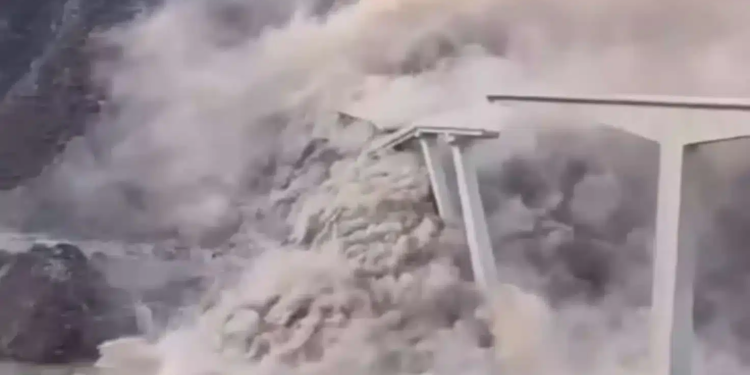A brand new bridge, inaugurated just a few months ago in Sichuan province, southwest China, partially collapsed after a landslide. The incident, which occurred on Tuesday, fortunately caused no casualties, but it relaunches a sensitive debate on the reliability of infrastructures built at high speed in risk areas.
The Hongqi Bridge, nearly 758 meters long, connected a strategic route between central China and the Tibet Autonomous Region. According to local media, cracks had been observed on the neighboring slopes the day before the tragedy, leading the authorities to ban traffic. A few hours later, part of the deck and the access ramp collapsed, carried away by a spectacular landslide.
Images posted on social networks show entire sections of the structure collapsing into the void in a few seconds. A scene all the more shocking as the bridge had been presented as a symbol of Chinese modernity and the efficiency of its large public projects.
If the authorities cite a difficult geological context – mountainous terrain, unstable slopes and heavy rains – many experts emphasize that the speed of construction and the political pressure to deliver quickly can sometimes compromise the durability of the works. The debate is all the more lively as China has increased colossal infrastructure in recent years as part of its regional development plan.
This accident, which occurred in a country which has made the speed of its projects an argument for power, questions the balance between ambition and security. He also reminds us that infrastructures, even the most recent, must be designed for the long term, with rigorous monitoring of geotechnical and climatic conditions.








